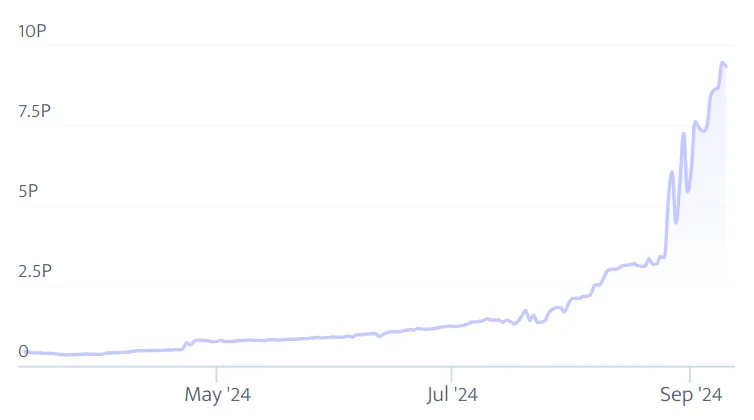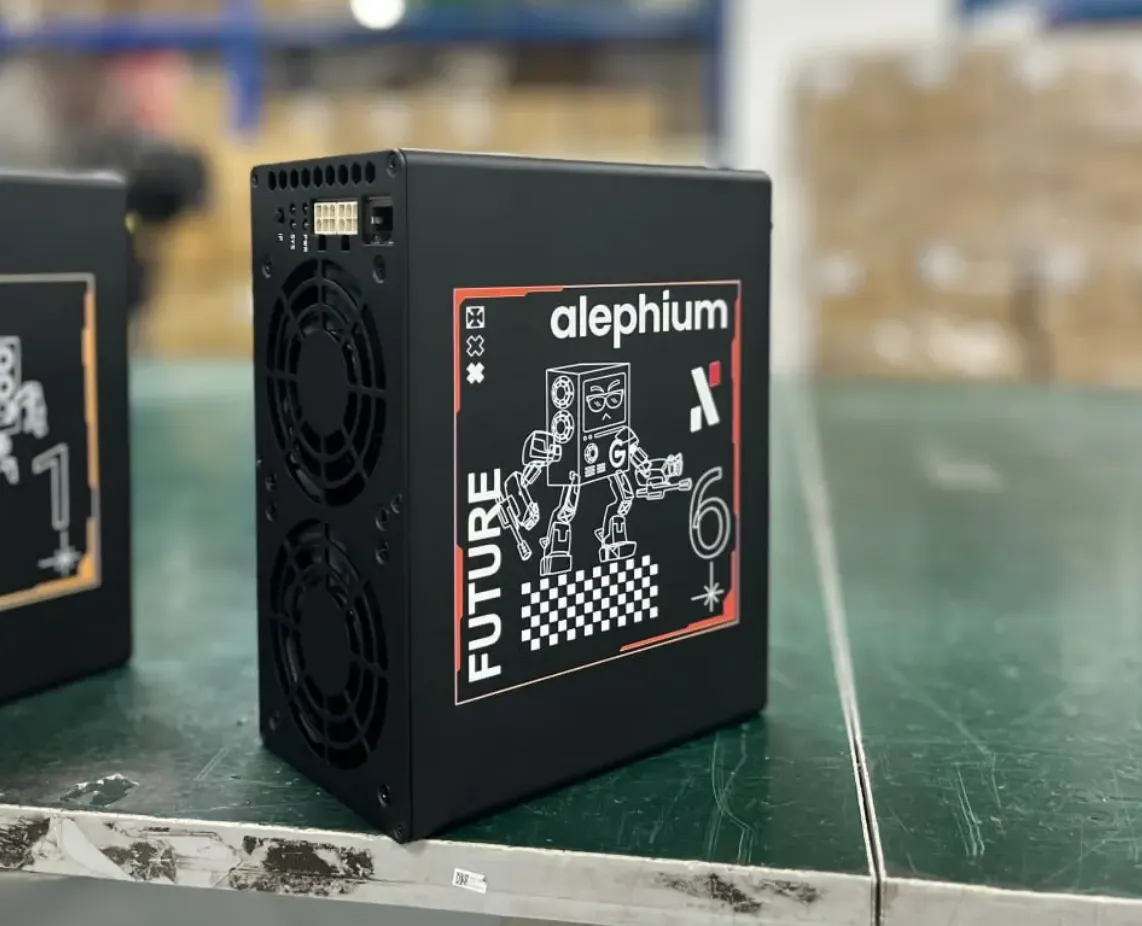Bitcoin isn't the only Proof of Work (PoW) cryptocurrency in town sporting a rising hash rate.
Yesterday, House of Chimera posted to X that Alephium's hash rate has surged past 9 petahashes, a statistic that you can see yourself by visiting minerstat.

To provide some context, the hash rate of a proof-of-work cryptocurrency is directly correlated to its security, and measures the amount of electricity and compute power being used to validate the network's transactions.
This surge in hash power indicates that more miners are starting to invest in Alephium. In fact, hardware manufacturers like Goldshell have started producing ASICs specifically for Alephium, despite a significant correction in ALPH's price that has lasted since March.
While the increasing hash rate is certainly promising news, we need to keep in mind that greater than 51% of the hash power is currently concentrated in two mining poolss (f2pool and herominers), which could undermine the decentralization of the project if not rectified.
Alephium Innovates Upon Ethereum
Similar to Ethereum, Alephium is an open and programmable smart contract platform in which anyone can create decentralized applications (dapp).
Unlike Ethereum however, Alephium utilizes Bitcoin's UTXO model to improve token security, implements Blockflow sharding to achieve scalability, and employes a unique consensus algorithm to promote decentralization and energy conservation.
Securing Tokens With Bitcoin's UTXO Model
In a previous article, we discussed how tokens on platforms like Ethereum and Solana could be confiscated from users if dapp developers upgrade their smart contracts, or exercise their "freeze authority".
Alephium has solved this problem by applying Bitcoin's UTXO model to Ethereum's account model, preventing user tokens from being confiscated in smart contract upgrades, or stolen in a re-entrancy or flash-loan attack.
Unique Consensus Algorithm Conserves Energy
Alephium implements a unique consensus algorithm called Proof of Less Work (PoLW), which is a combination of PoW mining and the burning of coins. When the network reaches 1 Exahash per second, miners will need to start burning some ALPH to produce a block.

As the network grows, shifting some of the external cost (mining hardware and energy) to internal costs (the value of the ALPH coin) will make block production less energy intensive without sacrificing security.
Dapps AYIN and AlphPad
The Alephium community has launched a decentralized exchange (DEX) called AYIN that, similar to Uniswap, can be used to swap tokens and join liquidity pools. You can also stake the project's native token to earn trading fees.
There is another project in the ecosystem called AlphPad that facilitates standardized project launches on Alephium (some of which appear to be meme coins). By staking APAD, you can earn a share of the sales in ALPH coins.
Always keep in mind that new dapps can contain security flaws, and should be thoroughly researched before investing large sums of capital.
Alephium's Expanding Ecosystem
The soaring hash rate on the Alephium blockchain signals increased investment from miners, and potential for an expanding dapp ecosystem and user base.
The project has innovated upon Ethereum by improving token security, enabling scalability via sharding, and implementing an innovative consensus algorithm to conserve electricity.
Although Alephium's mining power could be further decentralized, and its dapp ecosystem still needs time to evolve, this is definitely a project worth keeping an eye on.
If you learned something new from this article, be sure to check out my other posts on crypto and finance here on the HIVE blockchain. You can also follow me on InLeo for more frequent updates.
Until next time...
Resources
Alephium Hash Rate Chart [1]
Alephium ASIC Miner Image [2]
Alephium's Medium Page [3]